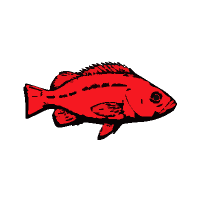A seven year web project funded by the Columbia Basin Fish Accords was highlighted at this week’s meeting of the Northwest Power and Conservation Council. The Yakama Nation over the past seven years has been developing a website that showcases the tribe’s accomplishments with its Accords projects. The entry to the website is at http://dashboard.yakamafish-star.net/ Dubbed STAR, it means Status and Trends Annual Reporting, which sounds technical, but the Nation has managed to make this website accessible to all levels of expertise, using it as an outreach tool as well as a technical resource for Columbia River basin biologists. Michelle Steg-Geltner and Steve Parker of the Confederated Tribes and Bands of the Yakama Nation previewed to the Council at its meeting Tuesday, Jan. 15 in Portland, the website that Steg-Geltner has been developing.
According to a Jan. 9 Council Memorandum (https://www.nwcouncil.org/sites/default/files/2019_0115_2.pdf), the Council supported the Nation’s proposal to report annually the tribe’s progress towards salmon recovery efforts. STAR is one of the products. The website developed by Steg-Geltner includes an annual comprehensive report covering implementation of all BPA funded Yakama Nation projects, the status and trend of target species, and other relevant impacts and benefits of the Nation’s Accords projects. Additional developments include online interactive resources, processing and sharing efficiencies, and regional reporting services, according to the Memo. The information on the website is comprehensive with nine species and runs of anadromous fish, covering 13 million acres and 1,812 habitat restoration sites. In addition, she designed the website so it is useful for the general public, tribal members, project managers, as well as for scientists and biologists looking for data. “The major role of STAR is to provide answers to common questions,” Steg-Geltner said. From the least technical to the most technical, the website has summary reports from projects, interactive features, information management systems and datasets, she said.
Among the website’s features are high level summaries, infographics, comprehensive reports and topic-based summaries. For people looking for detail, they can “drill down” into the details contained in the reports and datasets included on the website. It can be used as a resource for managers: it has status and trends for species and habitat, interactive maps and passage counts, among many other features, she said.




